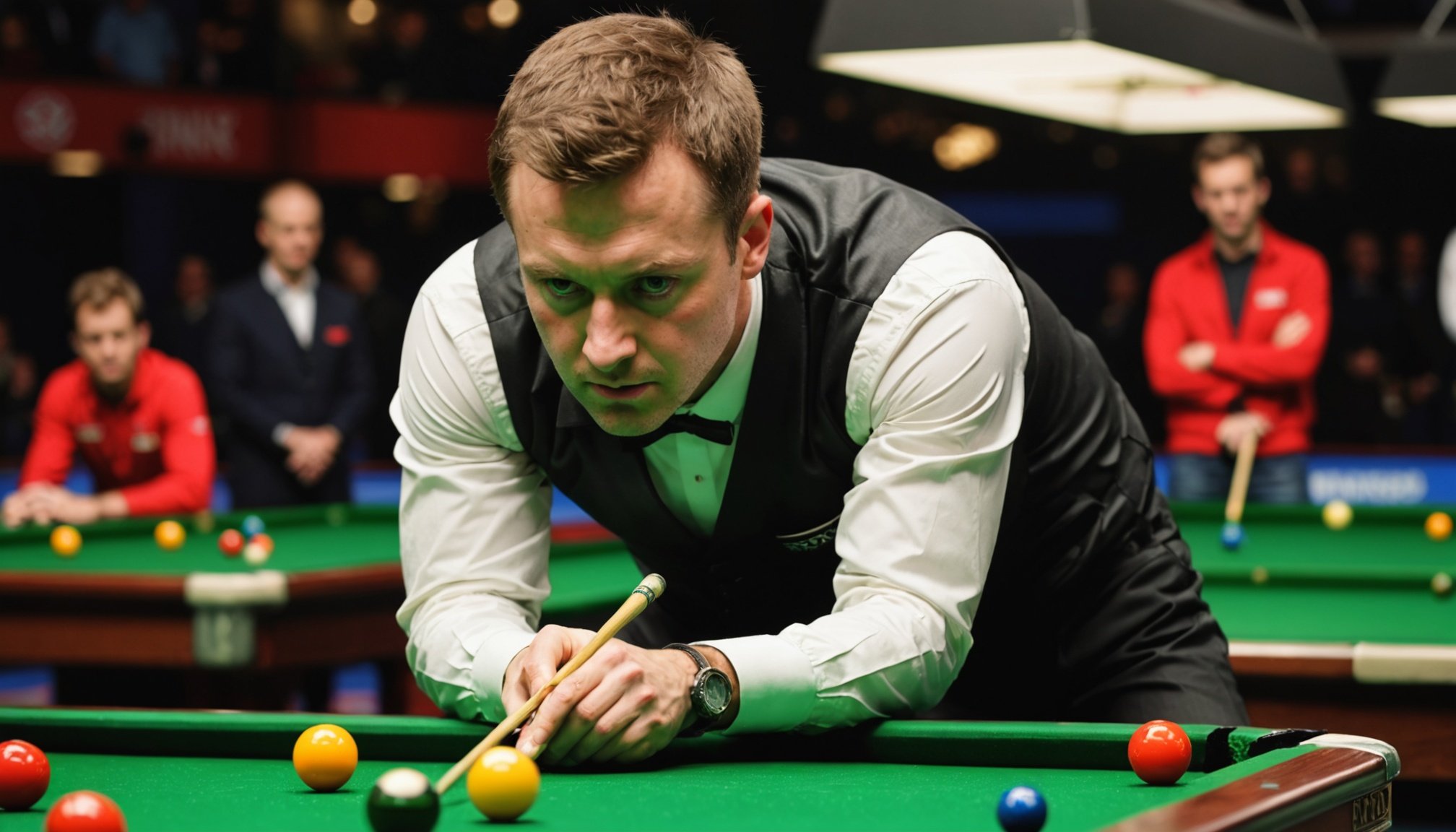Understanding Periodization in Snooker
Periodization in snooker pertains to structuring training cycles to peak at the ideal time, enhancing athletic performance. It’s a deliberate approach used to divide the training process into specific phases. This concept, widely utilized in sports, aims to optimize performance and minimize the risk of injury or burnout.
The principles of periodization revolve around systematically alternating periods of training load, intensity, and recovery. By organizing training cycles, snooker players can focus on developing specific skills or recovery, ensuring each session serves a clear purpose. This structured approach helps maintain motivation and focus, allowing athletes to reach peak performance levels when it truly matters.
In the same genre : Transforming tactical training in field sports: how cutting-edge reality technologies are changing the game
There are various periodization models applicable to snooker, such as linear, non-linear, and block periodization. Linear periodization involves gradually increasing training intensity over time. Non-linear periodization, on the other hand, incorporates multiple training elements within a short timeframe, offering flexibility. Lastly, block periodization emphasizes concentrated, focused training blocks on specific aspects, allowing for intense immersion and understanding in particular skill sets. Each model offers unique benefits, tailored to the demands of snooker, ensuring players can fine-tune their training cycles effectively.
Designing a Training Schedule
Creating an effective snooker training schedule involves several strategic steps. First, it’s crucial to balance skill practice with physical conditioning and mental training. Each component plays an essential role in a player’s overall development.
This might interest you : Enhancing speed and precision: how real-time biomechanical feedback transforms hurdle techniques for track athletes
Begin by assessing the player’s current skill level and goals. This will guide the allocation of time towards different aspects, ensuring a structured approach. Typically, a training week should comprise sessions on refining techniques, followed by conditioning workouts. Additionally, integrating mental exercises can significantly enhance focus and resilience—critical attributes for snooker success.
When preparing for competitions, training intensity should be carefully managed. Gradually increase intensity as the event approaches. However, it’s equally important to taper off just before competitions to ensure peak performance.
Balancing these elements requires regular schedule adjustments. Regularly review progress and adapt schedules to ensure they remain effective and aligned with evolving needs. Moreover, incorporating feedback from coaches can offer valuable insights, helping fine-tune your training agenda.
Lastly, flexibility remains key. A snooker player must adapt their routine dynamically, considering unexpected challenges or opportunities to maintain optimal preparation levels.
Recovery Techniques for Snooker Players
Recovery in sports is not just about bouncing back from injuries but also about maintaining an athlete’s performance and longevity. For snooker players, adopting specific recovery strategies can play a pivotal role in injury prevention and consistent performance.
Importance of Recovery
Understanding recovery’s significance in an athlete’s life can help snooker players sustain their careers. Effective recovery rejuvenates muscles, prevents fatigue, and reduces the risk of long-term injuries. Recognising when you’re overtraining or on the brink of burnout is crucial to ensure continued improvement and a healthy body into the future.
Recommended Techniques
Specialised strategies for snooker players go beyond standard methods. Incorporating stretching routines that focus on upper body flexibility can help maintain precision in shots while reducing muscular tension. Hydration, massage, and balanced nutrition are fundamental pillars in any recovery plan, promoting both mental and physical revival. Mindfulness techniques, such as meditation or controlled breathing exercises, enhance mental clarity and resilience during matches.
Recognising Overtraining
Snooker players should remain vigilant for signs of overtraining, such as persistent fatigue, mood changes, or a decline in performance. Listen to your body, adjust your training regimen, and ensure timely rests to counter any onset of burnout.
Mental Preparation Strategies
Building a strong mental game is crucial in snooker. To enhance focus, snooker players can employ several mental conditioning strategies. Visualization is a powerful tool; imagining successful shots before executing them can significantly improve performance. This mental rehearsal conditions the mind to remain calm and composed under pressure.
Setting clear, achievable goals is another essential strategy. Establishing step-by-step objectives helps players maintain focus and motivation during training and matches. Goals act as a road map, guiding players and ensuring they remain committed to their snooker ambitions.
Psychological resilience plays a vital role, especially in high-pressure situations. Developing this resilience involves practicing mindfulness and maintaining a positive outlook, even when faced with adversities. Recognizing negative thought patterns and replacing them with positive affirmations can enhance psychological resilience.
Here are some tips for mental conditioning in snooker:
- Practice mindfulness: Regular meditation can help maintain calm and focus.
- Positive self-talk: Encourage yourself with affirming phrases during challenging moments.
- Self-reflection: Regularly assess your mental strategies to identify areas for improvement.
By integrating these techniques, players can improve their psychological resilience and maintain focus on their snooker journey.
Performance Assessment and Feedback
In evaluating player performance, employing diverse performance metrics and skill evaluation techniques is crucial. Methods such as video analysis offer a visual means to assess progress, identifying key areas for enhancement. This approach allows for a detailed breakdown of gameplay, offering insights into technical skills and tactical decision-making.
Statistics also play a fundamental role in this assessment process. By examining data points such as pass completion rates, shot accuracy, and defensive actions, trainers and players can pinpoint specific aspects of their performance that require attention. This quantitative analysis complements the qualitative observations from video analysis, offering a comprehensive overview of player capabilities.
Feedback loops are essential in fostering continuous improvement. Regular feedback sessions, integrating insights from both video analysis and statistical data, provide players with actionable guidance. Through constructive feedback, players can refine their skills, adapt strategies, and set measurable goals for future training sessions. This iterative process of assessment and feedback ensures that players remain on a path of continuous development, ultimately enhancing their overall performance and contributing to team success.
Case Studies and Success Stories
Exploring real-world applications of periodization in snooker performance provides valuable insights. Many athletes have achieved remarkable training success by adopting structured approaches. Take, for example, the case of snooker player Mark Selby. Selby harnessed periodization to amplify his endurance and focus during demanding tournaments. His meticulous scheduling allowed for peaks in performance when it mattered most.
Another inspiring athlete case study is Ronnie O’Sullivan. By breaking down his training into distinct phases, O’Sullivan could target specific skills, thus enhancing his cue ball control. This strategic segmentation of training routines illustrates the powerful impact of tailored exercise regimes on snooker success.
Lessons learned from these case studies highlight the importance of personalized planning. Players who meticulously map out their training phases can mimic these accomplishments in their personal routines. They might consider implementing periods of intensive practice interspersed with rest phases to maintain an optimal balance. By mirroring the strategies of these successful athletes, enthusiasts and aspiring professionals alike stand to improve their game dramatically. Adopting such tailored approaches can lead to significant strides in performance for players at all levels.
Tips to Prevent Burnout
Recognizing early signs of burnout is crucial for maintaining athlete well-being. Common indicators include chronic fatigue, decreased motivation, and a drop in performance. Athletes might also experience irritability or emotional exhaustion, which can affect their focus during training sessions.
Creating an enjoyable training environment is essential for burnout prevention. Encouraging a sense of community among snooker players can enhance motivation and make training sessions more engaging. Incorporating varied exercises and providing positive feedback helps athletes stay interested and committed to their training.
To achieve sustainable training, athletes should maintain a healthy work-life balance. This involves setting realistic goals to avoid overwhelming themselves. Scheduling regular breaks and ensuring sufficient rest are practical strategies that support recovery and well-being. Engaging in activities outside of snooker, such as hobbies or social events, is vital for mental relaxation.
To summarize, athlete well-being is enhanced by early detection of burnout signs, a positive training atmosphere, and a balanced lifestyle. By prioritizing these aspects, athletes can enjoy a fulfilling career without compromising their health and performance.











